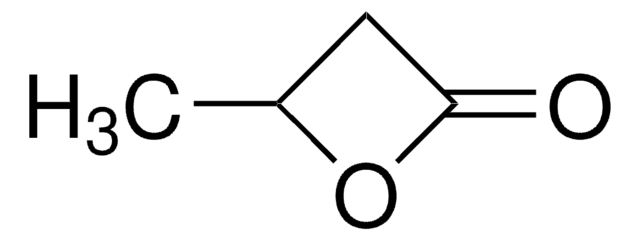P9769
Decaethylene glycol monododecyl ether
nonionic surfactant
Synonym(s):
C12E10, Polyoxyethylene (10) lauryl ether
About This Item
Recommended Products
Quality Level
form
semisolid (with melting point ~24 °C.)
mol wt
626.86 g/mol
SMILES string
CCCCCCCCCCCCOCCOCCOCCOCCOCCOCCOCCOCCOCCOCCOCCOCCOCCOCCOCCOCCOCCOCCOCCOCCOCCOCCOCCO
InChI
1S/C58H118O24/c1-2-3-4-5-6-7-8-9-10-11-13-60-15-17-62-19-21-64-23-25-66-27-29-68-31-33-70-35-37-72-39-41-74-43-45-76-47-49-78-51-53-80-55-57-82-58-56-81-54-52-79-50-48-77-46-44-75-42-40-73-38-36-71-34-32-69-30-28-67-26-24-65-22-20-63-18-16-61-14-12-59/h59H,2-58H2,1H3
InChI key
IEQAICDLOKRSRL-UHFFFAOYSA-N
Looking for similar products? Visit Product Comparison Guide
Application
Signal Word
Warning
Hazard Statements
Precautionary Statements
Hazard Classifications
Acute Tox. 4 Oral - Aquatic Chronic 2 - Eye Irrit. 2 - Skin Irrit. 2
Storage Class Code
11 - Combustible Solids
WGK
WGK 2
Flash Point(F)
Not applicable
Flash Point(C)
Not applicable
Personal Protective Equipment
Regulatory Listings
Regulatory Listings are mainly provided for chemical products. Only limited information can be provided here for non-chemical products. No entry means none of the components are listed. It is the user’s obligation to ensure the safe and legal use of the product.
PRTR
Class I Designated Chemical Substances
ISHL Indicated Name
Substances Subject to be Indicated Names
ISHL Notified Names
Substances Subject to be Notified Names
JAN Code
P9769-VAR:
P9769-500G:
P9769-1KG:
P9769-BULK:
P9769-100G:
Certificates of Analysis (COA)
Search for Certificates of Analysis (COA) by entering the products Lot/Batch Number. Lot and Batch Numbers can be found on a product’s label following the words ‘Lot’ or ‘Batch’.
Already Own This Product?
Find documentation for the products that you have recently purchased in the Document Library.
Customers Also Viewed
Our team of scientists has experience in all areas of research including Life Science, Material Science, Chemical Synthesis, Chromatography, Analytical and many others.
Contact Technical Service














